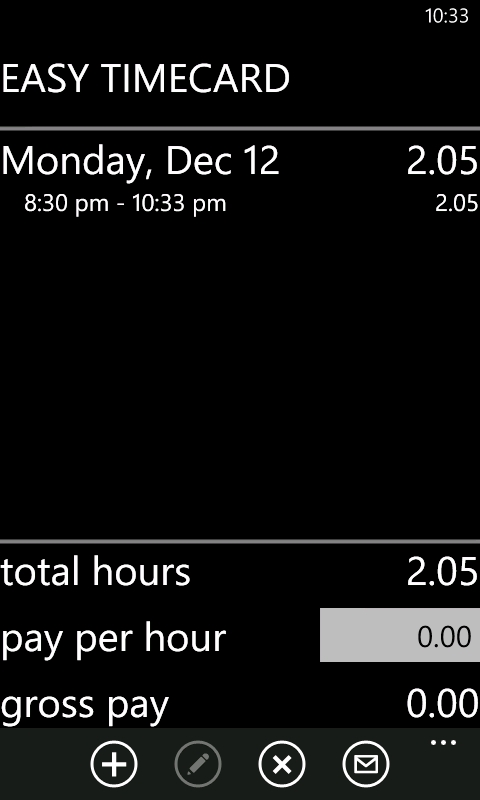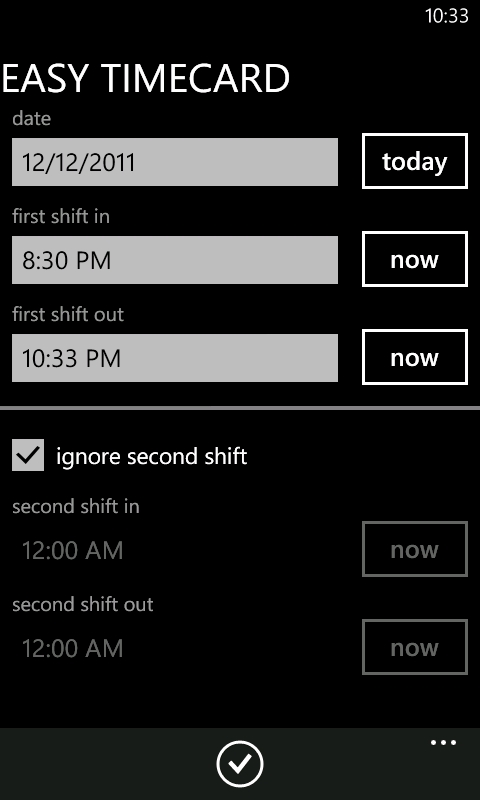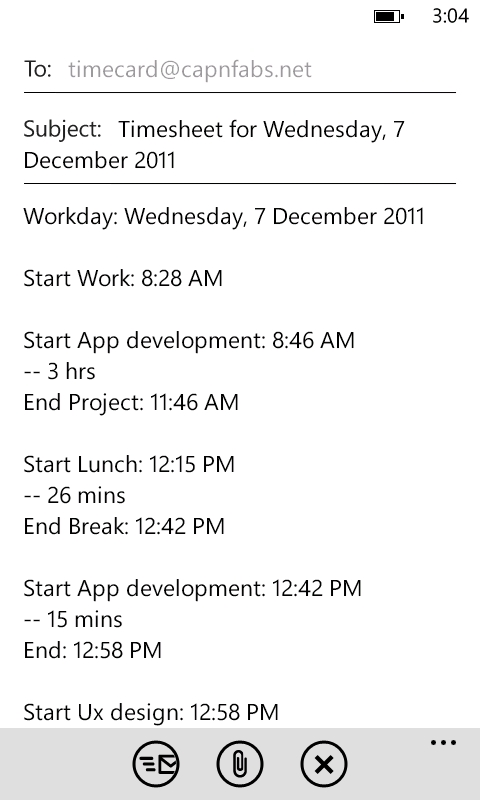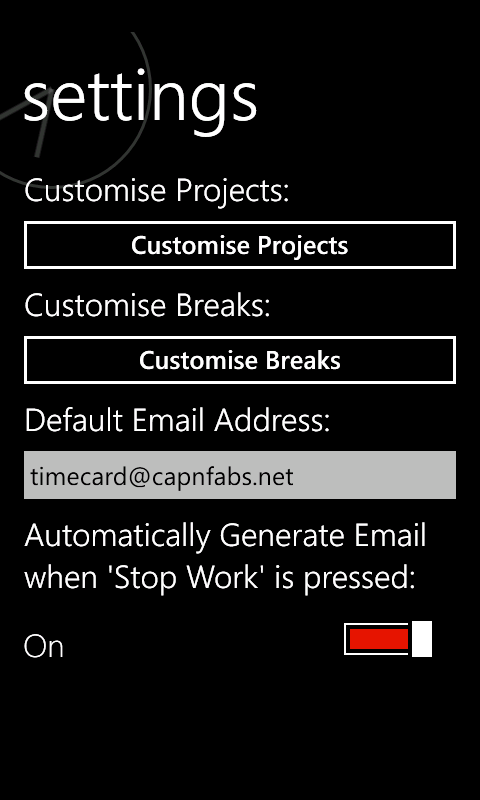I finished off an app for the Windows Phone 7 Marketplace this week, it’s called Timecard. You can find a link to it here, and, aside from some slight icon colouring issues, I’m pretty happy with it! Anyway, I just figured I should write a few notes about how I put it together and some of the design decisions I made, and I’d love to hear what you think in the comments section below if you’ve got any thoughts.
The competition, or, what not to do




Now don’t get me wrong, both of these apps seem incredibly feature-rich, and, from the testing I’ve done, work fairly well. It’s just much harder to visually draw information out of them or to put information in.
Timecard
This is my app, Timecard:




Better ways of displaying and manipulating information
The thing with all of the timecard apps we just looked at is that they stick with an information manipulation system that probably works perfectly with the underlying data structures, but require you to enter the data after you finish your shift. They still require you to undertake the most tedious step – remembering when you started.
What I’m arguing for with Timecard is an application paradigm that focusses on two things:
- Displaying information in a way that answers users’ key questions (a la Magic Ink): When did I start work again this morning? How long did I spend on this project?
- Manipulating information in a way that complies with the user’s thought patterns: I’m about to start work on a new project, better punch in. I’m about to go to lunch, better put it into my Timecard.
The brilliant thing about digital applications is that they can simplify this whole loop - they fill in the gaps quickly and intuitively. The difference between Timecard and its competitors is that Timecard uses context to remove an input factor - instead of entering the time manually, you punch in at the appropriate time, and that Timecard uses screen real estate and colour to indicate project time or break time instead of endlessly scrolling listboxes and walls of text.
In retrospect (June 2019)
Timecard got pulled from the Windows Phone Store sometime in 2017. There was a constant stream of little things I had to do to keep it on the store, and seeing as I never released anything further than a v1 and eventually made it free, there wasn’t a lot of incentive to keep working on it here. The thing that eventually made it go away was a Microsoft compliance change requiring me to submit an update with age rating info. Upon trying to do so, I was told that I had to name my app something other than ‘Timecard’ because the store now had a name registration system, and apparently someone else had come along and registered that in the meantime. It wasn’t worth it, and Windows Phone was getting to the end of its life anyway (I met someone who had one in September 2018 and could not believe it, but I still thought that OS had a lot of charm and aesthetic).
I’d initially set the price at the ~USD 0.99 tier, and after a couple months received a cheque in the mail from Microsoft for USD 40. Cashing the cheque wasn’t worth it; the fees on international cheques at Australian banks are huge (we also don’t even really use cheques anymore). Eventually I bumped the price to around USD 3, and then in late 2012 made it free + open source.
The open sourced code was somewhere between v1 and v2 - it’s currently broken but it’s on Github. I don’t know what happened to the working version of the code; my version control system back then was just copying the source directory to a new folder with the date periodically. 😅
In 2017, I got two emails from former users who’d upgraded their devices and couldn’t find the app on the store anymore:
I cannot seem to get this app timecard which I really like on my Windows 10 phone. Is it still supported?
do you happen to have a .xap or whatever Windows Phone uses to install? … Your app was pretty useful to me but there was an issue with my phone and the app is no longer available in the store and I don’t have a backup to restore and I haven’t found another app I like as much as yours.
It’s unbelievable how much receiving those emails meant! If you use a free / labour of love app, send the developers an email. They might not have time to reply to you, but the strangers on the other side of the internet will appreciate the fact that you thought of them ❤️.